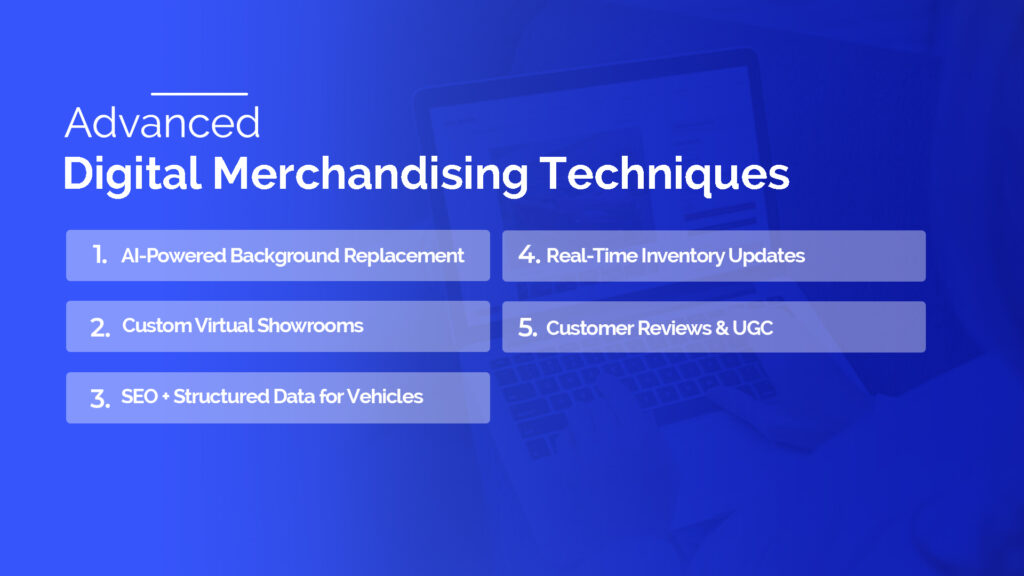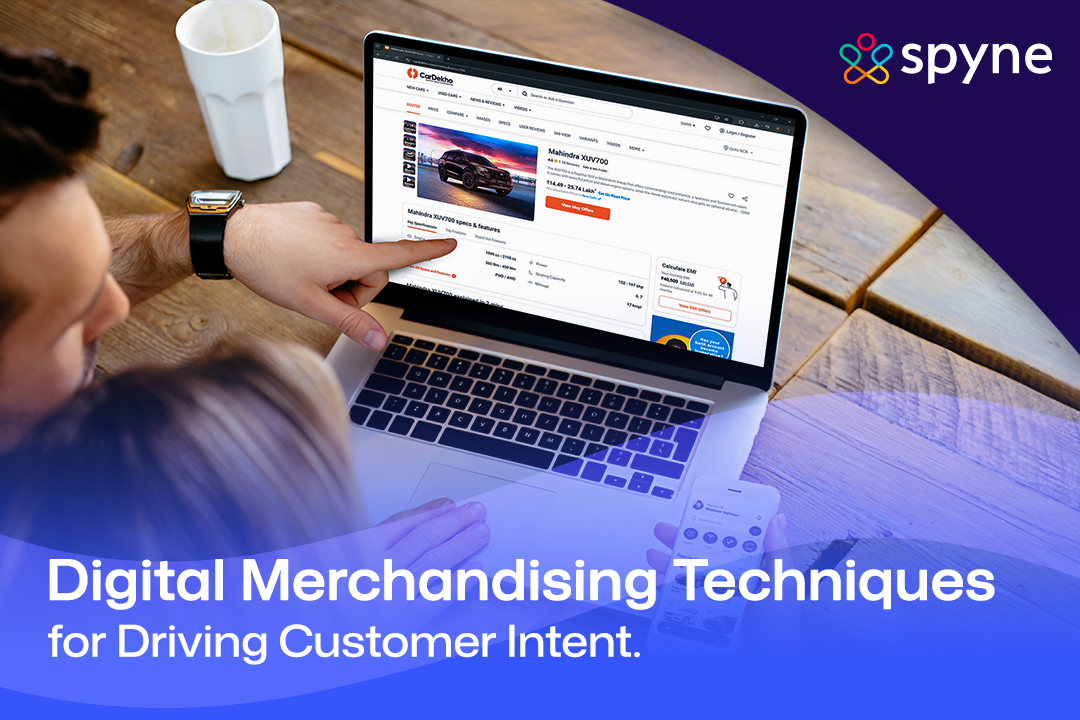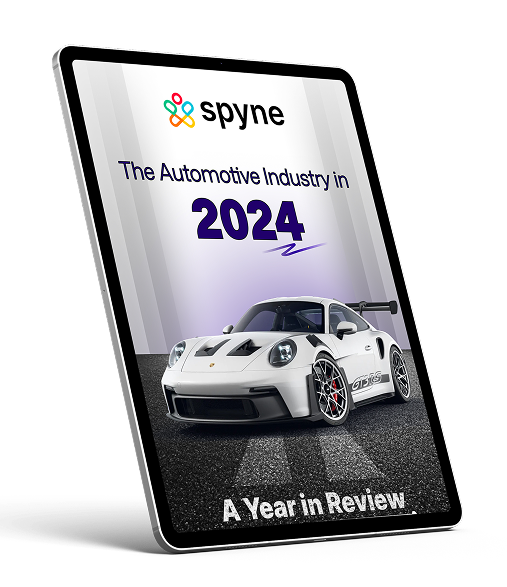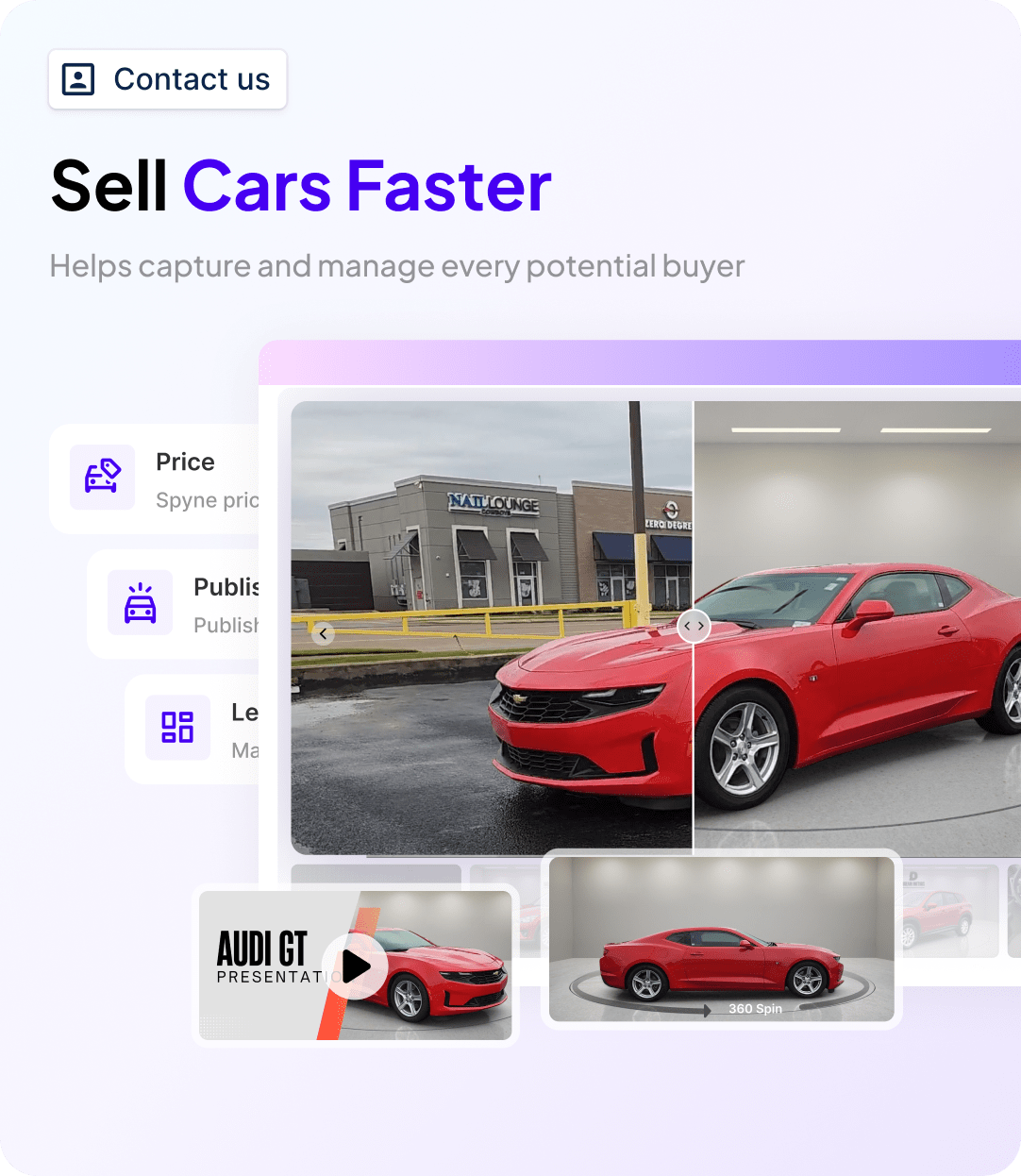In the automotive industry, what happens online plays a bigger role than what happens in showrooms. The days of depending solely on foot traffic and flashy windscreen stickers are gone. If you want your vehicles to sell, you’ve got to win the digital shelf. That’s why you need digital merchandising techniques.
It’s not just uploading some car photos and hoping for the best. Digital merchandising means creating a rich, interactive experience for buyers who are shopping from their phones or laptops. It’s everything from the first photo they see, to the spin view they swipe through, to the trust they feel when they book a test drive, all online.
Let’s break down why this matters more than ever, what digital merchandising techniques are being used, and how platforms like Spyne are making it all way easier than it sounds.
What Is Digital Merchandising in Automotive?
Digital merchandising in the automotive space refers to the way cars are presented and marketed online. It includes digital merchandising techniques involving photos and videos on a listing to the virtual showroom, pricing strategies, SEO, online merchandising strategies, customer reviews, and how inventory is sorted or highlighted. With retail merchandising software, dealers can streamline these processes to create a great digital experience.
It’s like arranging a physical showroom, only now, you’re designing a digital version of it that runs 24/7 and has to capture someone’s attention in seconds. But, online shoppers can’t touch, feel, or test drive the car immediately. So, your visuals, words, and user experience need to do all the talking.
Here’s what people expect these days:
- Clean, crisp car images
- 360° views and virtual walkarounds
- Quick load times on mobile
- Honest, easy-to-read info
If your digital shelf isn’t ticking those boxes, you need to level up.
The Impact of Digital Merchandising on Sales Growth
Buyers are now researchers. Before they think of stepping into your dealership, they’ve already compared you with competitors, checked prices, watched reviews, and maybe even taken a virtual test drive. This means your digital car merchandising is your frontline and you need to use the retail digital merchandising techniques.
A well-merchandised listing can:
- Increase leads and conversions
- Reduce time-on-lot
- Build trust and transparency
- Help you rank higher on platforms and Google
On the flip side, poor digital presentation can kill interest instantly, even if you’ve got a great deal.
Core Components of Automotive Digital Merchandising
Let’s break down the key pieces that make online merchandising strategies work.
1. High-Quality Vehicle Images
Photos are your first impression. If they’re blurry, poorly lit, or inconsistent, potential buyers bounce. Modern customers expect studio-like clarity even if the photos were shot on a lot. Here’s what helps:
- Use 360-degree spins
- Offer interior and exterior views
- Ensure clean backgrounds
- Show close-ups of features (e.g., infotainment, seats, tires)
Spyne, a powerful retail merchandising software, can auto-enhance images, replace messy backgrounds, and ensure a consistent visual style across your entire inventory.
2. Videos and Virtual Tours
We live in a scroll-happy world. But videos make people stop. Including short, well-edited videos or interactive walkarounds can:
- Increase engagement
- Reduce bounce rates
- Help customers feel more confident in their decision
Even better? Virtual test drives or AR features that let users “sit” inside the car from their phone.
3. Accurate, Transparent Descriptions
Don’t just say “great condition” or “best deal.” Describe the car’s features like you’re talking to a potential customer. Mention highlights like low mileage, one-owner history, or tech features. But also be honest about any flaws. This builds trust. And trust sells.
4. Optimized Pricing Display
Pricing transparency matters. Break down the cost clearly like base price, taxes, additional fees. Offer financing options right on the listing if possible. Consider dynamic pricing tools that adjust based on demand, seasonality, or local trends.
5. Inventory Search Filters and Organization
Make it ridiculously easy for buyers to find what they want. That means adding detailed filters like price range, mileage, color, fuel type, body style, etc. And ensure your top-performing models are highlighted prominently.
Advanced Digital Merchandising Techniques
Once you’ve nailed the basics, here are some retail digital merchandising techniques to go further and actually stand out.

1. AI-Powered Background Replacement
Photos taken on a crowded lot? Or in bad lighting? No problem. AI tools like Spyne can automatically clean up backgrounds and drop your car into a professional setting like a clean white car background, urban cityscape, or scenic highway.
This doesn’t just make your listing look good. It builds a premium, consistent brand image across all your inventory.
2. Custom Virtual Showrooms
Instead of listing vehicles like a boring spreadsheet, create a virtual dealership that feels alive. With tools like 3D floor plans or interactive interfaces, customers can “walk” through your digital showroom, zoom in on cars, and get a sense of being there, without leaving their couch.
3. SEO + Structured Data for Vehicles
Want your listings to pop up first on Google? Optimize with proper structured data. Use schema markup to tell Google exactly what your listing is about, it could be make, model, year, price, and more. The more search engines understand your inventory, the better visibility you’ll get.
Also, use relevant keywords: “used Toyota Camry near me” or “affordable SUVs in Dallas.”
4. Real-Time Inventory Updates
There’s nothing worse than falling in love with a car online, only to find out it’s already sold. Keep your inventory updated in real-time. Connect your backend with your listings so cars appear (or disappear) the moment their status changes.
5. Customer Reviews & User-Generated Content
People trust people. Encourage buyers to leave reviews, post photos of their new car, or tag you on Instagram. You can then highlight this UGC in your listings to add authenticity. Plus, it creates a feedback loop that keeps your digital ecosystem active.
What Metrics Matter?
Digital merchandising techniques aren’t “set it and forget it.” Here are key metrics to track:
- Click-through rates: Are people actually clicking your listings?
- Engagement time: How long are they spending on a page?
- Lead submissions: Are they filling out forms or calling?
- Conversion rate: How many listings turn into actual visits or sales?
- Bounce rate: Are users dropping off too soon?
These metrics help you tweak your digital merchandising techniques in real time. Maybe one type of background performs better. Maybe videos drive more interest for SUVs than sedans. The data tells the truth.
How Spyne Makes Visual Merchandising Online Effortless
Spyne is built specifically for dealers who want their visual merchandising online to look professional without the crazy overhead or stress. Selling five cars or five hundred, it helps you create listings that convert. Here’s what Spyne brings to your lot (virtually):
360° Spin Views
Let shoppers rotate the car with a swipe, just like they would walk around it. Spyne’s AI turns regular photos into smooth, interactive car 360 spin without any fancy gear.
Studio-Quality Photography
No DSLR? No problem. Snap photos using your phone, and Spyne transforms them into showroom-grade images. It fixes lighting, cleans up reflections, and makes your inventory look consistently premium.
Custom Backgrounds
No more messy backgrounds with trash cans and telephone poles. Swap in sleek, car custom backgrounds, or clean white ones with just a few clicks. It’s fast and makes every listing feel polished.
Number Plate Blur
Automatic number plate blur keeps privacy intact while keeping the focus on the car. It’s one less thing you have to think about.
Virtual Interior Tours
This one is amazing. Buyers can “walk through” the car interior online. Dashboards, seats, cabin space, it’s all there to explore.
A Full Merchandising Suite
It’s not just photo tools. Spyne handles the entire digital merchandising tools. Snap, edit, enhance, customize, and upload all in one place.
Final Words
Digital merchandising techniques are about selling your cars effortlessly. Buyers today are tech-savvy, impatient, and spoilt for choice. Your digital experience needs to be as polished and welcoming as your showroom floor.
Start with strong images, layer on videos and smart pricing, then level up with digital merchandising tools, 360 car showroom, and SEO strategies. Because the future of dealerships is already online. And your next sale might be just one scroll away.

















